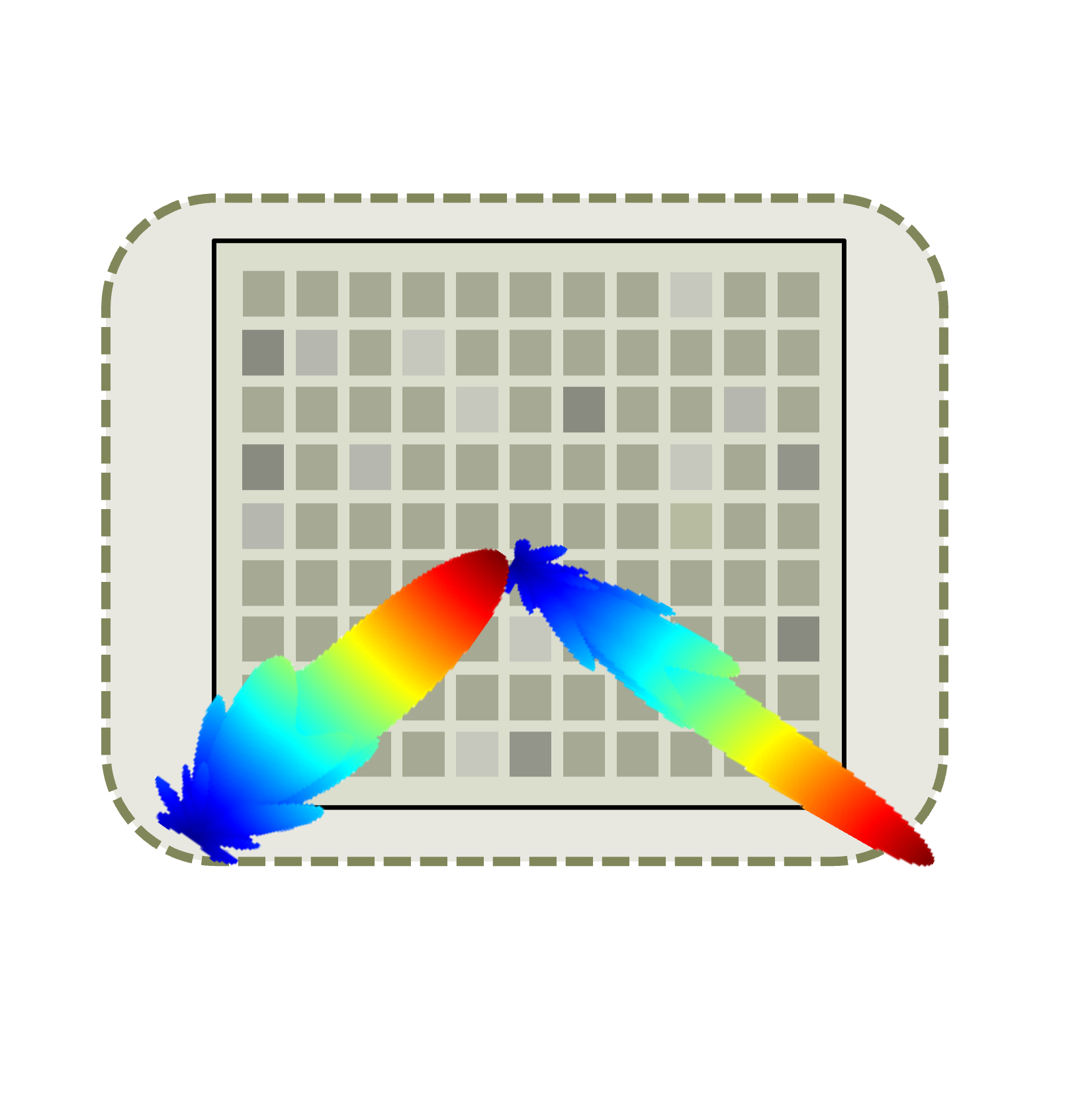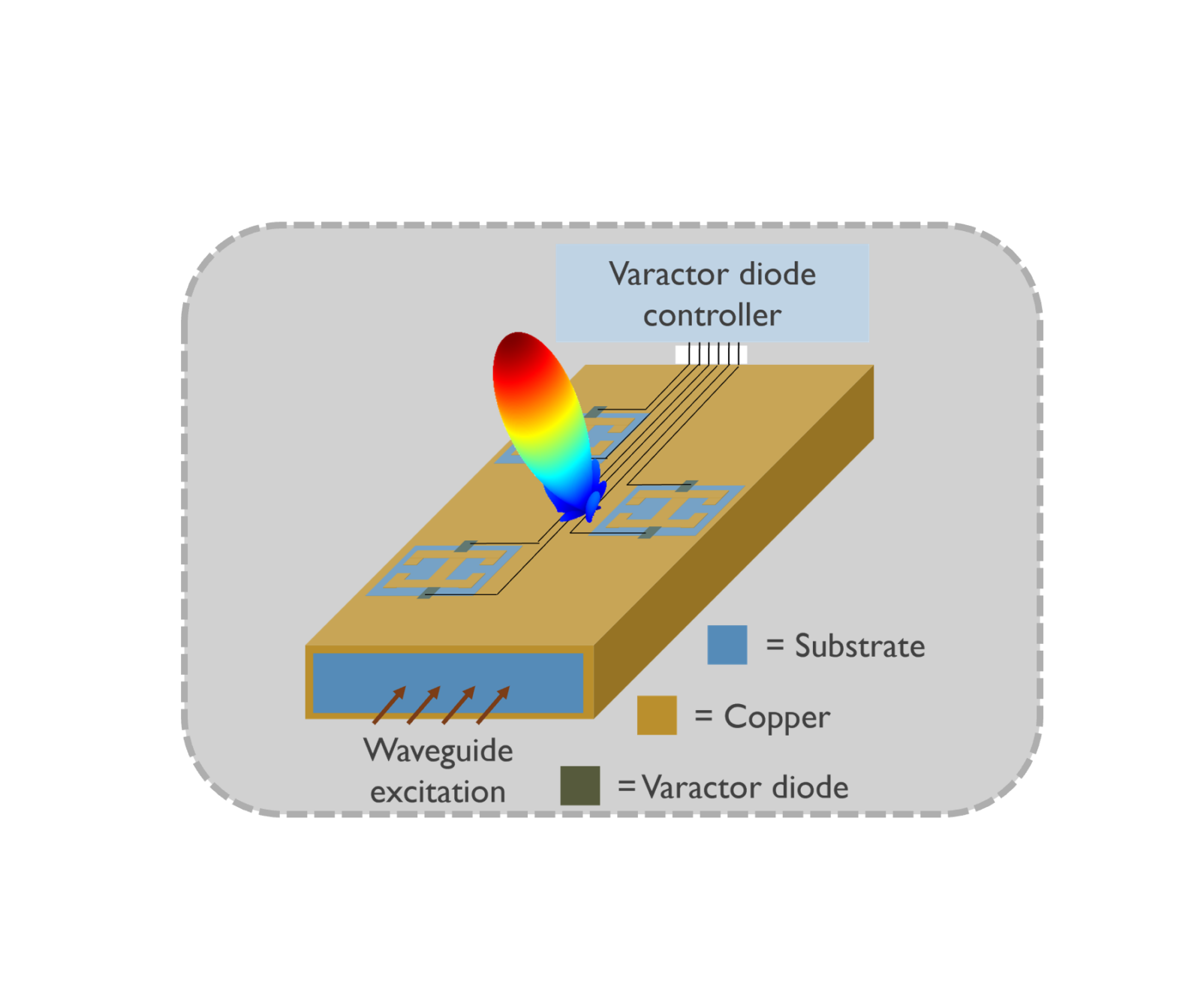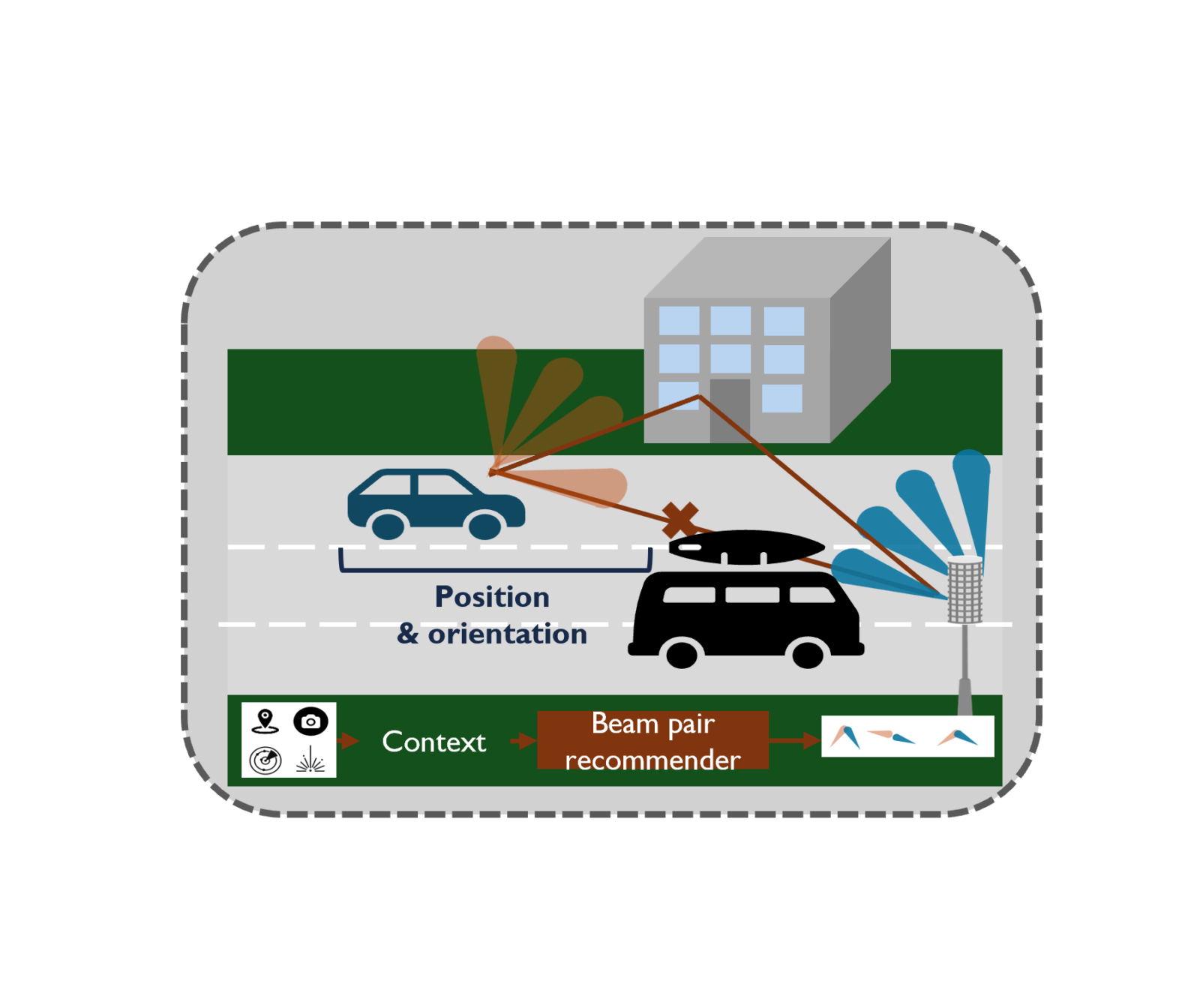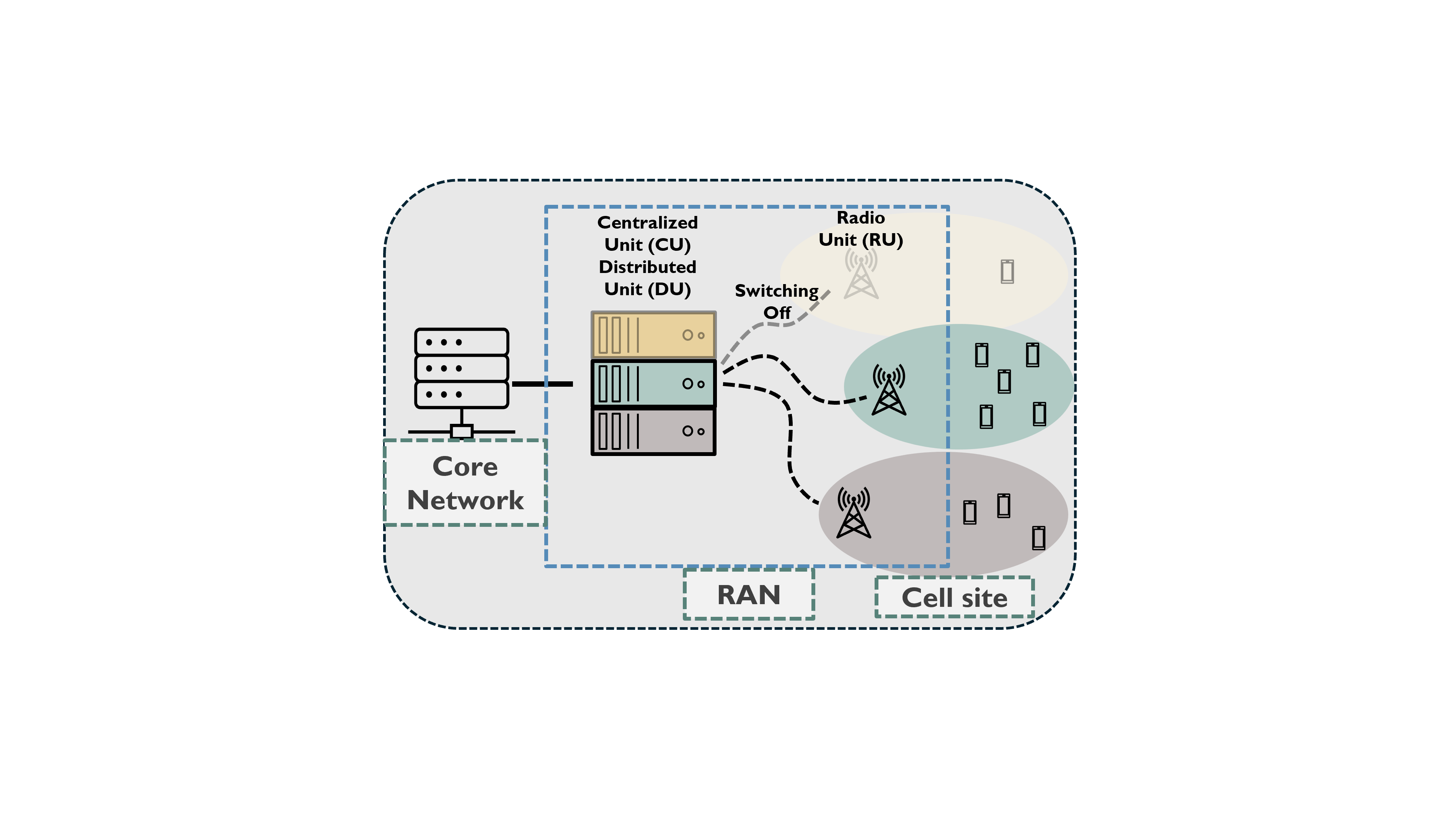Research
Welcome to the WSIL research page! This page provides a snapshot of current and ongoing research projects in Professor Robert Heath’s research group at UC San Diego. The page is brief so that it can be updated frequently. We want to acknowledge current and recent support for our research including the National Science Foundation under grant nos. NSF-ECCS-2435261, NSF-CCF-2435254, NSF-CNS-2433782, funds from federal agencies and industry partners as specified in the Resilient & Intelligent NextG Systems (RINGS) program, the Army Research Office under Grant W911NF2410107, Qualcomm Innovation Fellowship, Nokia, and Samsung.
[1] A. Mezghani et al., “Reincorporating circuit theory into information theory,” IEEE BITS Information Theory Magazine, pp. 1–17, 2023, doi: 10.1109/MBITS.2023.3346329.
[2] V. Shyianov, M. Akrout, F. Bellili, A. Mezghani, and R. W. Heath, “Achievable rate with antenna size constraint: Shannon meets Chu and Bode,” IEEE Transactions on Communications, vol. 70, no. 3, pp. 2010–2024, Mar. 2022, doi: 10.1109/TCOMM.2021.3099842.
[3] N. V. Deshpande, M. R. Castellanos, S. R. Khosravirad, J. Du, H. Viswanathan, and R. W. Heath, “A generalization of the achievable rate of a MISO system using bode-fano wideband matching theory,” IEEE Transactions on Wireless Communications, vol. 23, no. 10, pp. 13313–13329, Oct. 2024, doi: 10.1109/TWC.2024.3400793.
[1] M. R. Castellanos, J. Carlson, and R. W. Heath, “Energy-efficient tri-hybrid precoding with dynamic metasurface antennas,” in 2023 57th Asilomar Conference on Signals, Systems, and Computers, Oct. 2023, pp. 1625–1630. doi: 10.1109/IEEECONF59524.2023.10476911.
[1] J. Carlson, M. R. Castellanos, and R. W. Heath, “Dynamic metasurface antennas for energy-efficient MISO communications,” in GLOBECOM 2023 – 2023 IEEE global communications conference, Dec. 2023, pp. 7502–7507. doi: 10.1109/GLOBECOM54140.2023.10436779.
[2] J. Carlson, M. R. Castellanos, and R. W. Heath, “Hierarchical codebook design with dynamic metasurface antennas for energy-efficient arrays,” IEEE Transactions on Wireless Communications, vol. 23, no. 10, pp. 14790–14804, Oct. 2024, doi: 10.1109/TWC.2024.3419107.
[2] J. Carlson, M. R. Castellanos, and R. W. Heath, “Hierarchical codebook design with dynamic metasurface antennas for energy-efficient arrays,” IEEE Transactions on Wireless Communications, vol. 23, no. 10, pp. 14790–14804, Oct. 2024, doi: 10.1109/TWC.2024.3419107.
[1] R. W. Heath and N. González-Prelcic, “Beamsharing in mixed near-field / far-field MIMO systems for the upper mid-band,” in 2024 IEEE 25th International Workshop on Signal Processing Advances in Wireless Communications (SPAWC), Sep. 2024, pp. 786–790. doi: 10.1109/SPAWC60668.2024.10694278.
[1] R. M. Dreifuerst and R. W. Heath, “Machine learning codebook design for initial access and CSI type-II feedback in sub-6-ghz 5G NR,” IEEE Transactions on Wireless Communications, vol. 23, no. 6, pp. 6411–6424, Jun. 2024, doi: 10.1109/TWC.2023.3331313.
[2] R. M. Dreifuerst and R. W. Heath, “Hierarchical ML codebook design for extreme MIMO beam management,” IEEE Transactions on Machine Learning in Communications and Networking, vol. 2, pp. 688–702, 2024, doi: 10.1109/TMLCN.2024.3402178.
[3] A. Rico-Alvarino and R. W. Heath, “Learning-Based Adaptive Transmission for Limited Feedback Multiuser MIMO-OFDM,” IEEE Transactions on Wireless Communications, vol. 13, no. 7, pp. 3806–3820, Jul. 2014, doi: 10.1109/TWC.2014.2314104.
[4] R. C. Daniels, C. M. Caramanis, and R. W. Heath, “Adaptation in Convolutionally Coded MIMO-OFDM Wireless Systems Through Supervised Learning and SNR Ordering,” IEEE Transactions on Vehicular Technology, vol. 59, no. 1, pp. 114–126, Jan. 2010, doi: 10.1109/TVT.2009.2029693.
[2] R. M. Dreifuerst and R. W. Heath, “Hierarchical ML codebook design for extreme MIMO beam management,” IEEE Transactions on Machine Learning in Communications and Networking, vol. 2, pp. 688–702, 2024, doi: 10.1109/TMLCN.2024.3402178.
[3] A. Rico-Alvarino and R. W. Heath, “Learning-Based Adaptive Transmission for Limited Feedback Multiuser MIMO-OFDM,” IEEE Transactions on Wireless Communications, vol. 13, no. 7, pp. 3806–3820, Jul. 2014, doi: 10.1109/TWC.2014.2314104.
[4] R. C. Daniels, C. M. Caramanis, and R. W. Heath, “Adaptation in Convolutionally Coded MIMO-OFDM Wireless Systems Through Supervised Learning and SNR Ordering,” IEEE Transactions on Vehicular Technology, vol. 59, no. 1, pp. 114–126, Jan. 2010, doi: 10.1109/TVT.2009.2029693.
[1] K. Patel and R. W. Heath, “Harnessing multimodal sensing for multi-user beamforming in mmWave systems,” IEEE Transactions on Wireless Communications, pp. 1–1, 2024, doi: 10.1109/TWC.2024.3475950.
[2] I. Kilinc, R. M. Dreifuerst, J. Kim, and R. W. Heath, “Beam training in mmWave vehicular systems: Machine learning for decoupling beam selection,” in 2024 IEEE International Black Sea Conference on Communications and Networking (BlackSeaCom), Jun. 2024, pp. 54–59. doi: 10.1109/BlackSeaCom61746.2024.10646235.
[3] Y. Wang, A. Klautau, M. Ribero, A. C. K. Soong, and R. W. Heath, “MmWave Vehicular Beam Selection With Situational Awareness Using Machine Learning,” IEEE Access, vol. 7, pp. 87479–87493, 2019, doi: 10.1109/ACCESS.2019.2922064.
[4] V. Va, J. Choi, T. Shimizu, G. Bansal, and R. W. Heath, “Inverse Multipath Fingerprinting for Millimeter Wave V2I Beam Alignment,” IEEE Transactions on Vehicular Technology, vol. 67, no. 5, pp. 4042–4058, May 2018, doi: 10.1109/TVT.2017.2787627.
[2] I. Kilinc, R. M. Dreifuerst, J. Kim, and R. W. Heath, “Beam training in mmWave vehicular systems: Machine learning for decoupling beam selection,” in 2024 IEEE International Black Sea Conference on Communications and Networking (BlackSeaCom), Jun. 2024, pp. 54–59. doi: 10.1109/BlackSeaCom61746.2024.10646235.
[3] Y. Wang, A. Klautau, M. Ribero, A. C. K. Soong, and R. W. Heath, “MmWave Vehicular Beam Selection With Situational Awareness Using Machine Learning,” IEEE Access, vol. 7, pp. 87479–87493, 2019, doi: 10.1109/ACCESS.2019.2922064.
[4] V. Va, J. Choi, T. Shimizu, G. Bansal, and R. W. Heath, “Inverse Multipath Fingerprinting for Millimeter Wave V2I Beam Alignment,” IEEE Transactions on Vehicular Technology, vol. 67, no. 5, pp. 4042–4058, May 2018, doi: 10.1109/TVT.2017.2787627.
[1] D. Kim, M. R. Castellanos, and R. W. Heath, “Joint band assignment and beam management using hierarchical reinforcement learning for multi-band communication,” IEEE Transactions on Vehicular Technology, vol. 73, no. 9, pp. 13451–13465, Sep. 2024, doi: 10.1109/TVT.2024.3397615.
[2] C. V. Nahum et al., “Intent-aware radio resource scheduling in a RAN slicing scenario using reinforcement learning,” IEEE Transactions on Wireless Communications, vol. 23, no. 3, pp. 2253–2267, Mar. 2024, doi: 10.1109/TWC.2023.3297014.
[3] Y. Zhang and R. W. Heath, “Reinforcement learning-based joint user scheduling and link configuration in millimeter-wave networks,” IEEE Transactions on Wireless Communications, vol. 22, no. 5, pp. 3038–3054, May 2023, doi: 10.1109/TWC.2022.3215922.
[4] V. H. L. Lopes et al., “Deep reinforcement learning-based scheduling for multiband massive MIMO,” IEEE Access, vol. 10, pp. 125509–125525, 2022, doi: 10.1109/ACCESS.2022.3224808.
[2] C. V. Nahum et al., “Intent-aware radio resource scheduling in a RAN slicing scenario using reinforcement learning,” IEEE Transactions on Wireless Communications, vol. 23, no. 3, pp. 2253–2267, Mar. 2024, doi: 10.1109/TWC.2023.3297014.
[3] Y. Zhang and R. W. Heath, “Reinforcement learning-based joint user scheduling and link configuration in millimeter-wave networks,” IEEE Transactions on Wireless Communications, vol. 22, no. 5, pp. 3038–3054, May 2023, doi: 10.1109/TWC.2022.3215922.
[4] V. H. L. Lopes et al., “Deep reinforcement learning-based scheduling for multiband massive MIMO,” IEEE Access, vol. 10, pp. 125509–125525, 2022, doi: 10.1109/ACCESS.2022.3224808.







